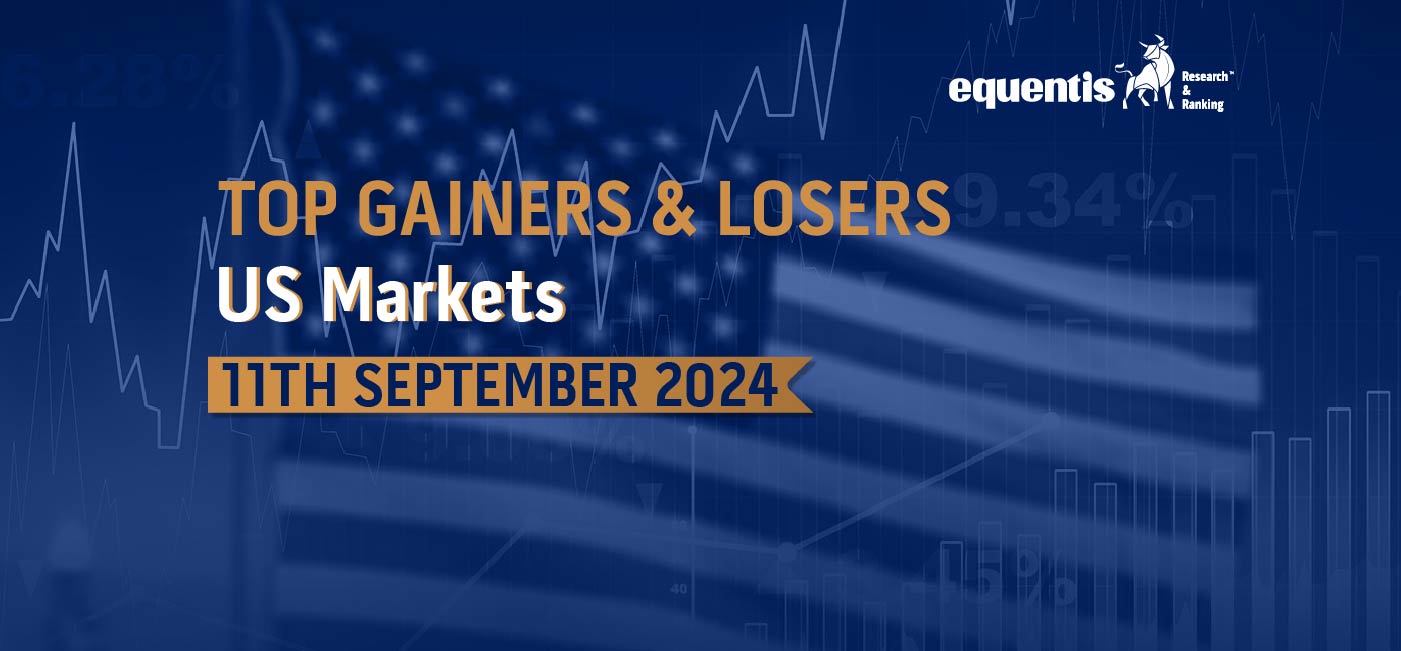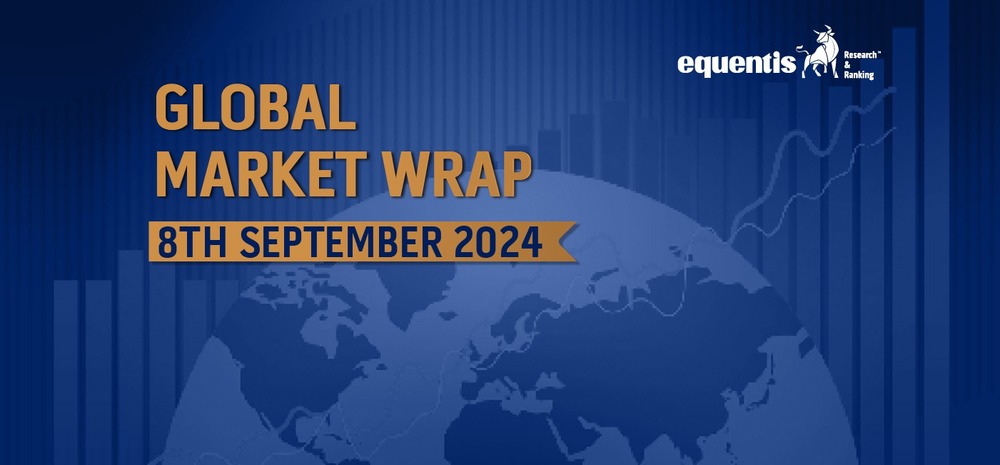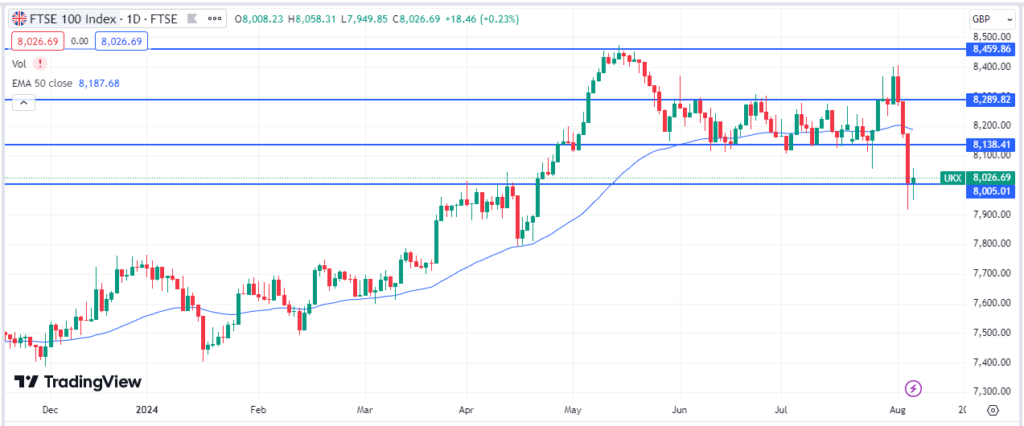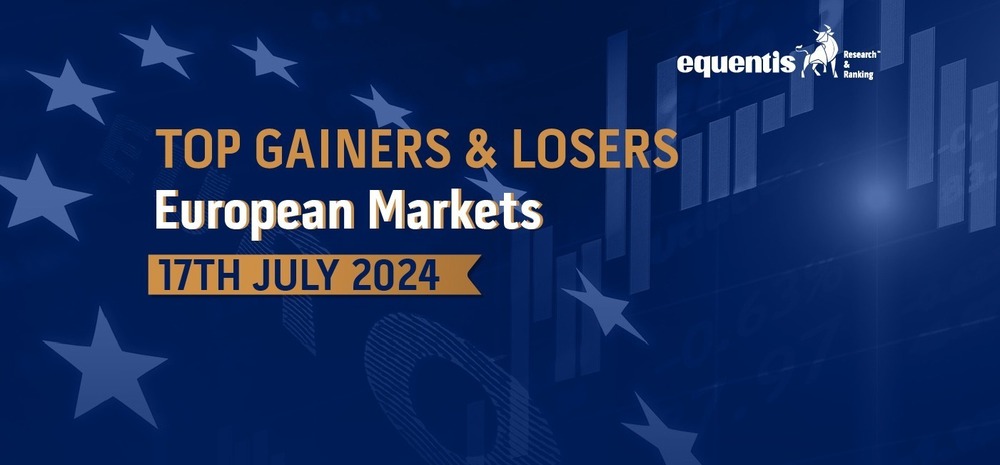This week, the global stock market traded on a mixed note, with investors largely optimistic and looking for the next big trigger to push higher. The central bank continues to unveil more support for the struggling economy in China as data indicated growing deflationary pressures. In Europe, favorable inflation data prompted countries to cut rates further to boost growth.
Crude oil dropped by more than 6.5% last week as fears of Israel striking Iran’s petroleum infrastructure subsided. Gold, on the other hand, continued to soar higher, gaining 2% during the week.
Let’s look at how the major stock market indices did this week
| Index | Previous Day Change (%) | WoW Change (%) |
| US Markets | ||
| Dow Jones | 0.09 | 0.96 |
| S&P 500 | 0.40 | 0.85 |
| Nasdaq | 0.63 | 0.80 |
| European Markets | ||
| FTSE 100 | -0.32 | 1.27 |
| CAC 40 | 0.39 | 0.46 |
| DAX | 0.38 | 1.46 |
| Asian Markets | ||
| Nifty 50 | 0.46 | -0.71 |
| Nikkei 225 | 0.18 | -1.58 |
| Straits Times | 0.41 | 1.68 |
| Hang Seng | 3.48 | -1.37 |
| Taiwan Weighted | 1.85 | 2.56 |
| KOSPI | -0.60 | -0.25 |
| SET Composite | -0.35 | 1.34 |
| Jakarta Composite | 0.32 | 3.18 |
| Shanghai Composite | 2.83 | 1.36 |
World Stock Market Index US Markets
Encouraging economic indicators in the third quarter has boosted investors’ confidence in the US market. The value of US retail sales increased 0.4% in September, up from 0.1% in August. However, industrial production dropped 0.3% in September, against 0.3% growth in August. The Federal Reserve has attributed this decline to Hurricanes and strikes at the Boeing factories.
Let’s check how the top US indices performed during the week.
Dow Jones
Dow Jones struggled to gain ground on Friday, with a significant pullback in American Express stock causing the index to close flat. Weekly, the index closed 0.96% higher.
S&P 500
Strength in utility and real estate stock pushed the broader S&P 500 index 0.40% higher on Friday, helping the index to close the week 0.85% higher and post a sixth consecutive weekly gain.
Nasdaq
Netflix’s better-than-expected quarterly performance, which resulted in the stock rising 11%, pushed the Nasdaq up 0.63% on Friday. On a week-on-week basis, the index closed higher by 0.80%.
World Stock Market Index European Markets
The European Central Bank cut key deposit rates to 3.25%, marking the first back-to-back reduction in 13 years. The European Commission’s statistics office reported that annual inflation was 1.7% in September, down from its initial estimate of 1.8% and well below the ECB’s target of 2%.
Now, let’s look at how different economies performed during the week.
FTSE 100
Slower-than-expected UK inflation and a decline in wage growth paved the way for the Bank of England (BoE) to lower borrowing costs. In Friday’s session, FTSE 100 traded slightly weak and was down by 0.32%. It increased by 0.46% on a week-on-week basis.
CAC 40
Gains in consumer goods, technology, and essential materials drove France’s primary stock market index, the CAC 40, higher this week. The index rose 0.39% on Friday and 0.46% on the week.
DAX
The rate cut boosted the German stock market to close at a record high at the end of the week, gaining 0.38% on Friday. On a week-on-week basis, the index was 1.46%.
World Stock Market Index Asian Markets
Strength in the Japanese and Chinese indices helped the other major Asian indices trade with a positive bias this week. Due to improved sentiment, the positive momentum is likely to continue.
Look at how the major stock market index performed during the week.
Nifty 50
The Nifty 50 was volatile during the week due to mixed quarterly earnings reports. On Friday, the index closed 0.46% higher, but on a week-on-week basis, it was down by 0.71% higher.
Nikkei 225
Factors like easing inflation and reduced chances of a rate hike again this year have kept Japan’s primary stock market index, Nikkei 225, less volatile. On Friday, the index was up by 0.18%, but on a week-on-week basis, it lost 1.58%. However, the weakening of the Yen has been a cause of concern for policymakers.
Straits Times
Singapore’s primary stock market index, Straits Times, traded with a positive bias. During Friday’s session, it was up by 0.41%, and on a week-on-week basis, it closed higher by 1.68%.
Hang Seng
Chinese stocks rebounded in Friday’s session as the world’s second-largest economy posted better-than-expected economic growth. However, the concern about deflation remains. On Friday, the Hang Seng index was up by 3.48%, helping to recover some of the weekly losses. Week-on-week, the index was down by 1.37%.
Taiwan Weighted
Taiwan’s primary stock market index, the Taiwan Weighted Index, traded higher on Friday, up 1.85%. On a week-on-week basis, the index rose 2.56%.
KOSPI
Profit booking on Friday’s session caused the South Korean stock market to close 0.60% lower, pulling the index down on a weekly basis. It was down 0.25%.
SET Composite
Thai stocks traded weak during Friday’s session, closing down 0.35%. However, the index rose 1.34% weekly, maintaining positive momentum for another week.
Jakarta Composite
The Indonesian stock market index, Jakarta Composite, traded flat on Friday, slightly up by 0.32%. On a weekly basis, the index was up 3.18%.
Shanghai Composite
China’s third-quarter GDP increased by 4.6% compared to last year, exceeding expectations and allowing the stock market to continue its bullish performance. On Friday, the Shanghai Composite rose 2.83%, reversing its weekly losses. It increased by 1.36% over the previous week.
Wrapping Up
As we wrap up the week, global stock markets showed mixed trends, with optimism rising as investors watch for the next big trigger. Key economic updates from China and Europe are shaping the outlook, while crude oil has sharply dropped, providing comfort to emerging economies. The U.S. markets remained strong, while Europe showed resilience with rate cuts fueling growth. Asian markets, too, witnessed some volatility but showed positive momentum.
The focus will be on how global economic factors, especially in China and Europe, continue to impact markets and investor sentiment.
Disclaimer Note: The securities quoted, if any, are for illustration only and are not recommendatory. This article is for education purposes only and shall not be considered as a recommendation or investment advice by Equentis – Research & Ranking. We will not be liable for any losses that may occur. Investments in the securities market are subject to market risks. Read all the related documents carefully before investing. Registration granted by SEBI, membership of BASL & the certification from NISM in no way guarantee performance of the intermediary or provide any assurance of returns to investors.














































